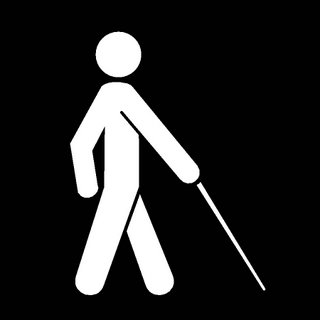
A new study has added another piece to the ____1____(谜团) as scientists learn more about how the brains of blind people work. Researchers are learning how the blind still get to use the part of the brain normally ____2____(专心于) vision.
Years ago, scientists began to learn that certain parts of the brain were ____3____(用于) certain purposes. One section was ____4____(管理) breathing; another dealt with the sense of smell. Then came the realization that the brain was changeable, or "____5____(可塑的)," and could sometimes reorganize itself when conditions required.
Professor Rauschecker has been studying the question: Could that ____6____(解释) the idea that blind people ____7____(补偿) their vision loss by improving their other senses?
In previous research, Rauschecker and other scientists have found that in blind people, the visual cortex(皮层), the part of the brain that processes(处理) sight, can be used to process sound and touch. But that visual cortex is itself divided into discrete(分离的,不关联的) modules(单元) that perform different visual functions.
"Now, the question is: do blind people have that same or similar functional organization, that these modules actually ____8____(原位不动) and just get re-dedicated to touch and hearing? And the answer is yes."
To come up with that answer, the researchers used a functional MRI(Magnatic Resonance Imaging,核磁共振成像) scanner(扫描仪) to visualize brain activity as blind people in the study experienced various tactile(触觉的) and audible sensations. The scientists could see what part of the brain was being used to process the sensory inputs. For example, when stereo sounds(立体声) were used to ____9____(模拟) a three-dimensional space, the brain's spatial(空间的) module was activated, as it would be in a sighted person.
Rauschecker says this study and earlier research has enabled collaborators(合作者) to build a ____10____(原型,雏形) device to process images taken by a camera into sensations that could be used by a blind person wearing it.
"So what we're hoping to do is build this device that would transform, basically, visual information into auditory(听觉的) information, and then tap(轻拍) this amazing reservoir(储藏) of the blind brain to process sounds and tactile information."
Joseph Rauschecker and colleagues describe their work in the journal Neuron.
2. devoted to
3. dedicated to
4. in charge of
5. plastic
6. account for
7. compensate for
8. stay put
9. simulate
10. prototype

